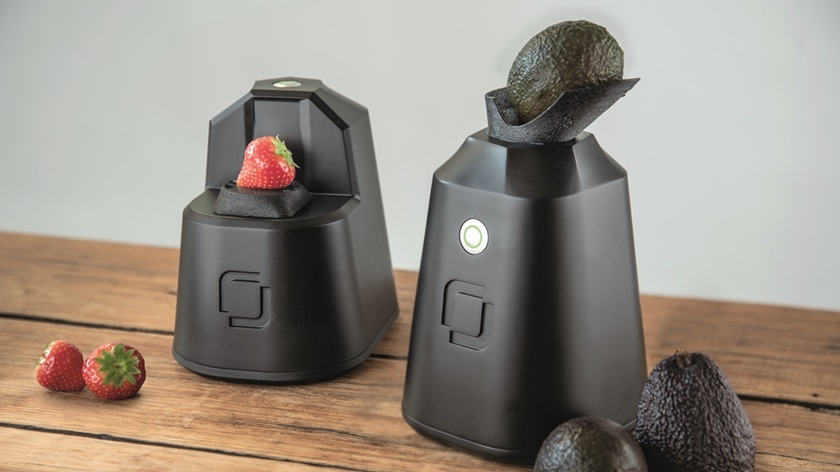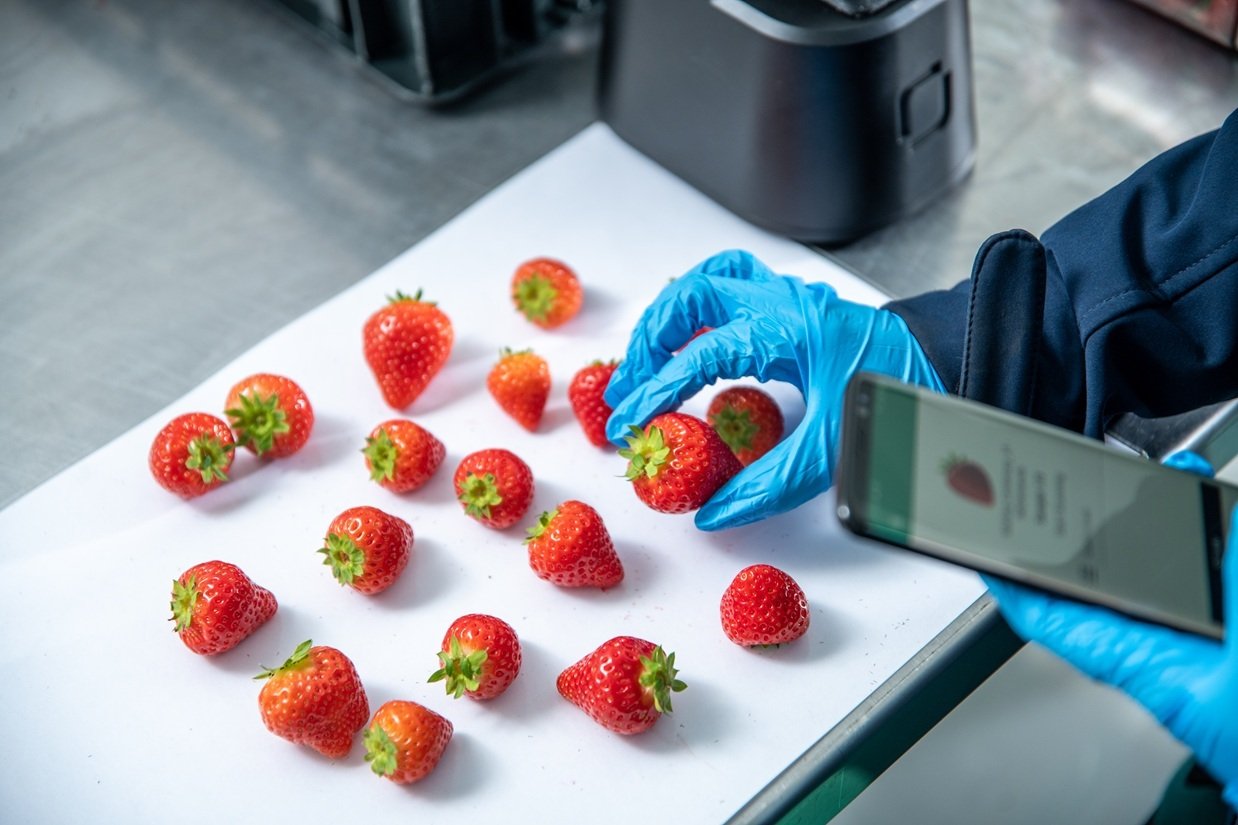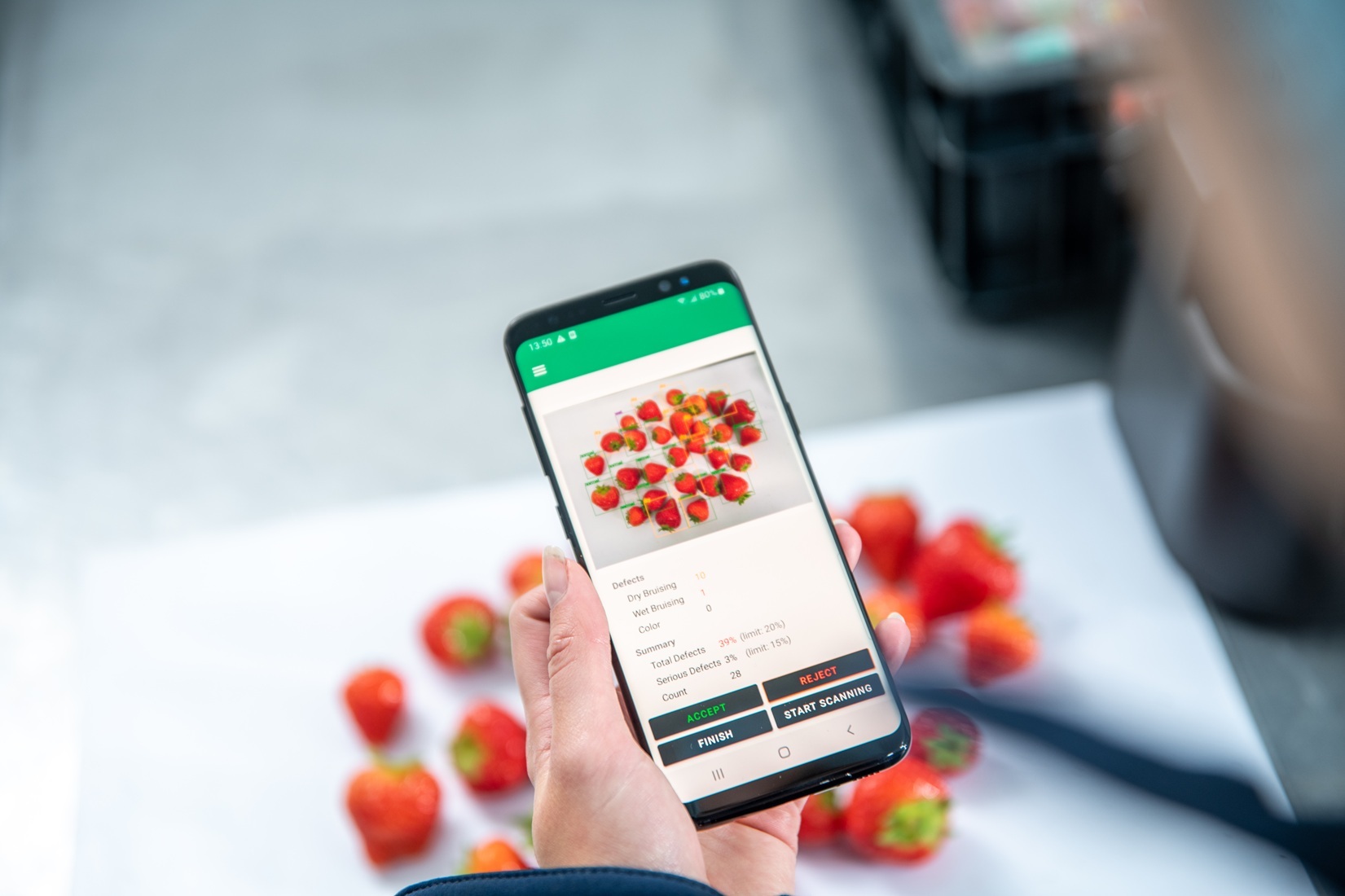
16 Jun 2023
doorOneThird
What is AI?
There are entire textbooks detailing what AI is.
First of all, it stands for “Artificial Intelligence”. This just means a computer is making decisions based on data.
Its usage has been growing because of the benefits that businesses see, especially in the food system. There are some technologies, like high-speed sorting and shelf life prediction, that can only AI can do.
Why is AI Used in Food Production and Distribution?
Two major trends show the need for AI in the food system.
- The increasing population
- A decrease in the number of people working in agricultural jobs
There will be 70% more mouths to feed by 2050
Because more people are being born every day, we have to find ways to feed them using the resources we have. There is a finite amount of land on the planet, so we must make the most of the food we do grow.
AI helps to make harvesting decisions, make smarter supply chain decisions, and reduce waste in other ways.
We have never had fewer people working agricultural jobs
150 years ago, around half of all people worked jobs in agriculture. This is now below 2% in America. Between 2008 and 2018, 236,800 agriculture jobs were added in the U.S. The BLS expects the U.S. to only add 10,600 agricultural jobs between 2018 and 2028.
The lack of human resources is one reason innovation and automation are important. If we have nobody to replace the roles people have filled for thousands of years, the food system falls apart.
What Are Some Benefits of Using AI in the Food System?
AI allows you to analyze huge amounts of data in a small amount of time.
Here are a few benefits the food and agriculture industry has seen:
- Increased cost savings
- Shelf life prediction and better routing decisions
- Less time spent generating reports
- Reduced food waste
- Improvements towards sustainability goals
- Easier and automated quality control

AI is used all across the food system, and the benefits differ for each business.
Different Ways AI Can Be Used in the Food System
In this section, we’ll discuss some of the more common applications of AI for the food supply chain.

Harvesting Decisions for Growers-
Knowing when to harvest certain crops is important for growers. AI has been able to accelerate research in this area. Growers can use mathematical equations to calculate harvest time, but what if one of those factors changes? And how do you know afterward if it was the right decision?
AI is powerful because you can use data (historical, current, and future) to make real-time decisions. It also allows you to analyze trends and make improvements over time.
Sorting Food-
Gone are the days where you have to inspect and sort each fruit and vegetable by eye. High-speed sorting today can handle thousands of items per minute and has revolutionized the industry. Equipment can sort items based on size, appearance, and quality. In the future, it will also be possible to sort based on shelf life to ensure consistent quality in each batch.
Shelf Life Prediction-
Shelf life prediction has been researched for over 20 years and you can finally use it in your business. OneThird is at the forefront of instant and accurate shelf life prediction technology. We have handheld devices that can make anyone an instant freshness expert. Major benefits include easier inspections, objective standards, and dynamic routing.
Be sure to read our free Ultimate Guide to Fresh Produce Shelf Life Prediction to learn more.
Dynamic Routing-
Wouldn’t it be nice to ship products expiring first out first? This is tough/impossible to do without knowing the shelf life of a batch and how it compares to others. With AI, this is a breeze.
Using dynamic routing, any company can quickly assess freshness and determine where to ship batches to maximize profit and minimize waste.
Customer Demand Forecasting-
It’s tough to predict what customers will buy at any given time. It is a major cause of food waste, and one that many in the food supply chain have said is their biggest pain.
Some companies can use social media, newsfeeds, weather data, and historical data to predict consumer demand.
Even increasing accuracy by one percent would save millions in food waste costs. Having proper forecasting can also benefit other applications, like dynamic routing.
Quality Assessment-
There are a lot of ways to assess the quality of fresh produce.
How many of these solutions can incorporate climate data?
How many can instantly compare results to every other measurement taken on that variety of produce?
With AI this can be done objectively in under 1 second and by anyone. You don’t have to rely on a gut feeling or visual assessment anymore.
In-Store Assessment and Dynamic Pricing-
Produce managers spend a large chunk of time assessing produce on shelves to determine if it is good to sell or not. What do they do with produce that doesn’t visibly change when it goes bad? Do they leave it on the shelf and harm their reputation from the customer receiving a bad product?
Chances are they will just toss products when they pass the sell-by date.
Shelf life varies for every piece of produce and too much edible food is thrown out because of limited knowledge on true shelf life.
What if you could know the remaining shelf life and price accordingly?
With dynamic pricing, retailers can sell lower-quality produce at a lower price, and vice-versa. AI is used to determine optimal prices for each type of fruit and vegetable to maximize profit and minimize waste. One such company, Wasteless, is doing that for several retailers.
Waste Measurement-
Many company sustainability programs haven’t gained traction because companies don’t know how much food they are wasting.
Some companies are wasting up to 50 percent of their food and still have no clue!
Mainly used in foodservice, there are solutions to monitor what exactly is going into waste bins and the weight of that waste. Knowing this information, you can know exactly how much you spend on wasted food and can track improvements. AI enables food recognition and improvement suggestions.
What Are Common Concerns With AI?
Since AI often can outperform humans and replace labor, it does not come without fear.
“This will steal jobs”
This is one of the most common fears of AI. While most applications are implemented to increase the output of existing workers, there typically are savings in labor hours. For most businesses, reducing labor hours is necessary to keep up with the competition. If a company is left with a high labor cost, it will be less profitable and lose customers to competitors offering lower prices.
However, having employees perform more meaningful tasks and using AI to automate repetitive tasks can improve job satisfaction.
“How do we know we can trust the AI outputs and suggestions?”
This depends on the technology, application, and business you are working with. Most companies in the food system already trust AI for critical business processes. It’s already used in your email to filter out spam!
However, it’s important to keep an eye out for red flags and implement solutions you can trust.
“This will complicate things for our employees”
There is a common fear that having employees use technology will make them overwhelmed and perform their job at a lower level. The right solution should get rid of the annoying and tedious tasks they face and make their job simpler. If an employee’s job is becoming more difficult due to AI, it may be time to critically evaluate that solution.
“It will be expensive to implement and run”
AI technology can be expensive at times, but it should always be justifiable if it has a big price tag. If a solution can save you an extra $1 million next year, how much would you pay for it? You could technically have a return on your investment if it costs $999,999. However, you always need to determine the return on investment (ROI) of all potential solutions and pick the best ones.
Preventing food waste can cause huge cost savings. Don’t believe us? Check out our Food Waste Savings Calculator.
Which AI Should You Implement?
The answer to this question depends on what your application is and what problems you are facing.
It is best used in aiding employees to do important roles in their job and to speed up the non-value-added aspects.
Artificial intelligence can also handle analyses that humans aren’t able to perform themselves and it is already commonly used.
How Can OneThird Help You Reduce Food Waste with AI?
OneThird uses AI to measure and analyze spectral data and compare it to thousands of measurements and external data sources to determine the shelf life of fresh produce.
You can learn more detail about how our technology can benefit growers, distributors, and retailers on our website.
Our video below explains more about our mission.


